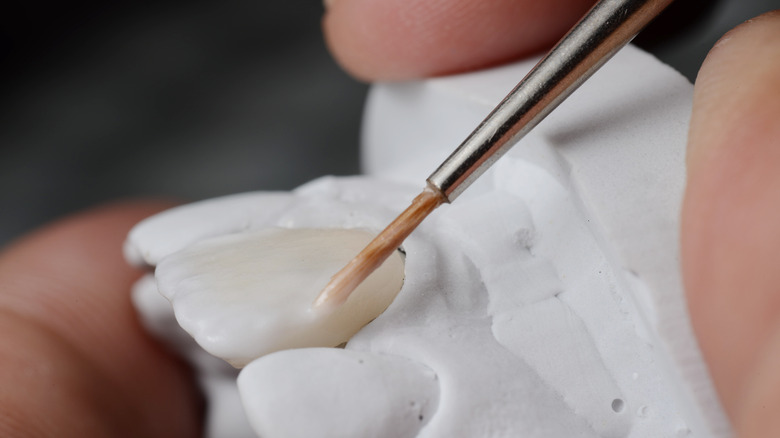Teeth bonding is a cosmetic dental procedure that involves using a tooth-colored composite resin material to enhance the aesthetics of your teeth and overall smile, according to Healthline. During this procedure, your dentist will likely apply this material and bond it to one or more of your teeth in order to improve the color or shape of each tooth. Teeth bonding is often used to repair chipped, cracked, decayed, or even discolored teeth, but can also be used to help fill in the small gaps or spaces in between your teeth.
In addition, bonding can be used to even out the length of your teeth by making shorter and uneven teeth appear longer. While the cost of this procedure can vary depending on the dentist and location, you can expect to pay around $300 to $600 per tooth. Once the procedure is completed, the bonding will last anywhere between five and 10 years.
How the teeth bonding process works

Generally speaking, not much preparation is required for the procedure (via WebMD). If the bonding is intended to fill in a decayed tooth, your dentist may need to administer anesthesia. That’s because the tooth will need to be drilled beforehand, which may cause pain and discomfort. Other than that, however, your dentist will just need to select the color of a resin material that most closely matches the rest of your teeth.
During the bonding process, the exterior of the tooth will be scruffed up before administering a conditioning liquid so that the material really sticks to the tooth. Then, they will apply the resin material, molding it into shape and smoothing it over. You can also expect your dentist to use a blue light to help harden the material, after which they will shape it one last time and polish the material so it matches the surface of the rest of your teeth. Each tooth should take around 30 to 60 minutes to complete.